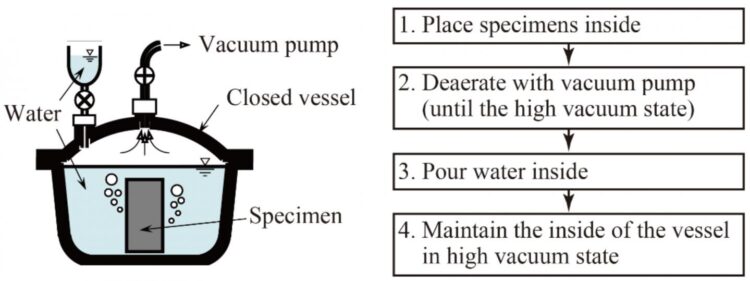A research team including Kanazawa University tests the impact response of the world’s hardest concrete

Credit: Kanazawa University
Kanazawa, Japan – Concrete is the most widely used building material in the world and consequently is being continuously developed to fulfill modern-day requirements. Efforts to improve concrete strength have led to reports of porosity-free concrete (PFC), the hardest concrete tested to date. Some of the basic properties of PFC have already been explored, and now a team including Kanazawa University has probed the impact response of this innovative material. Their findings are published in International Journal of Civil Engineering.
Ultra-high-strength concrete offers significant advantages including reducing the weight of large structures and protecting them against natural disasters and accidental impacts. PFC is an ultra-high-strength concrete whose properties can be further enhanced by incorporating steel fibers.
The way in which PFC is prepared leads to very few voids in the final material, which gives it its high strength–400 MPa can be applied to PFC before it fails, compared with 20-30 MPa for standard concrete. Some of the basic material properties of steel fiber-reinforced PFC have already been reported; now the researchers have evaluated the impact response of a range of PFC preparations with different steel fiber contents and section heights.
“The continued development of building materials is particularly important in areas where frequent natural disasters threaten the integrity of structures,” study lead author Yusuke Kurihashi explains. “We carried out impact tests on a variety of steel fiber-reinforced PFC samples to determine their reactions, and in so doing, accelerate the widespread application of PFC in building projects. Our testing is designed to simulate responses to events such as rock falls, blasts and flying objects.”
The researchers made two key findings. Firstly, they observed that increasing the steel fiber content from 1% to 2% reduced the damage due to the impact by 30%-50%. This significant improvement in performance is expected to inform future material design decisions.
In addition, they showed that it was possible to predict the behavior of the samples with approximately 80% accuracy by comparing calculated values with those that were measured, which will help to streamline development processes.
“We hope that PFC will contribute to enhanced building safety in the future,” says Dr Kurihashi. “Although additional experimental work and statistical processing is required to fully translate PFC into widespread practical applications, our findings make a significant contribution to understanding PFC’s role in improving the safety of many large structures including high-rise buildings, bridges and roads.”
###
Media Contact
Tomoya Sato
[email protected]
Related Journal Article
http://dx.





